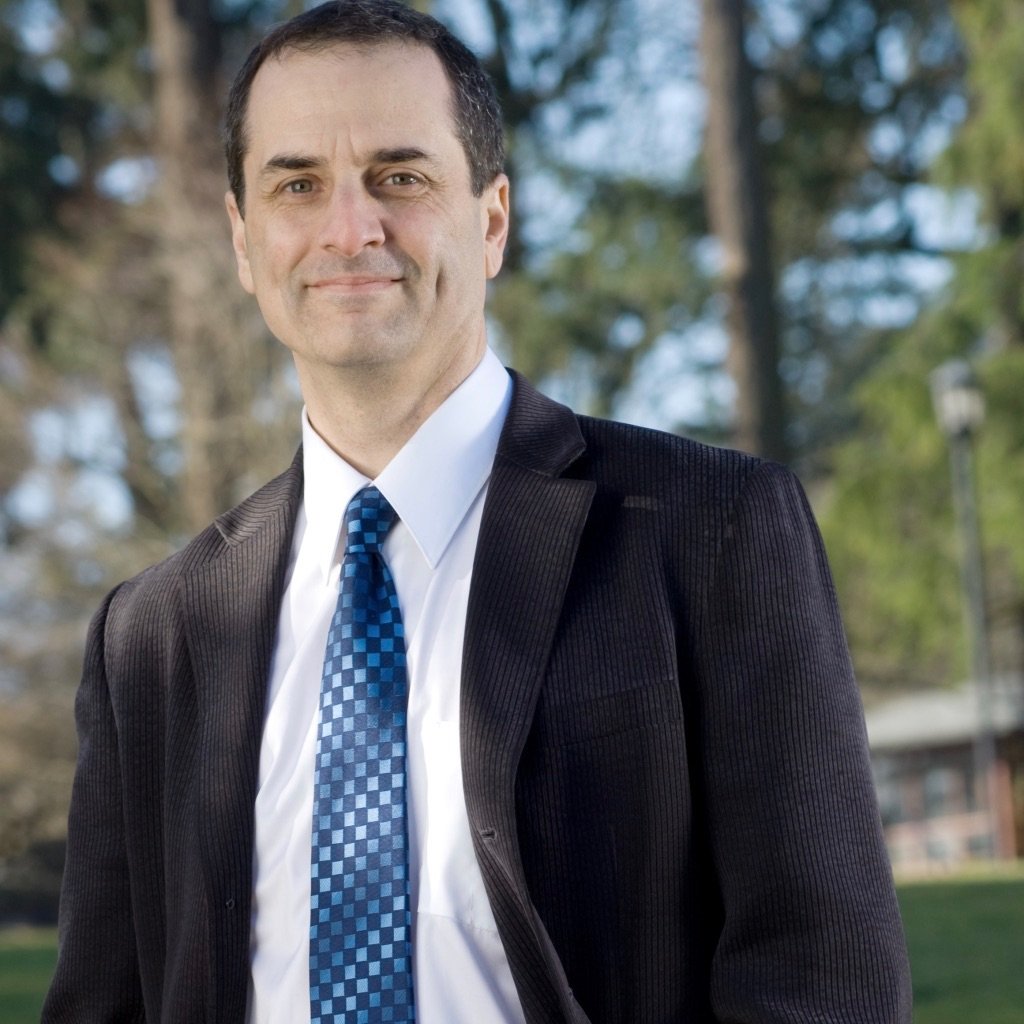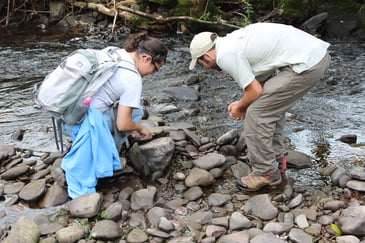Teaching Environmental Economics After Trump

While revising Economics and the Environment (with co-author Steve Polasky) for its ninth edition, we faced a new and major challenge. How to explain to our audience of twenty-year-old’s the radical shift in U.S. federal environmental policy that occurred post-2016? On the one hand, the change in direction has been dramatic and fundamental. Students really need to understand the shift from (a) the 50-year bipartisan consensus supporting the application of science and economics to developing regulations, to (b) the presumption of universal over-regulation and across the board roll-backs. On the other, as textbook authors, we wanted to explain the change and why it occurred, rather than emphasize a normative position on whether the outcomes were good or bad.
Here’s how we walked this tight-rope. First, we modify a former section in our book chapter on the political economy of regulation. We call it:
The Influence Game: Pre-2016
“The election of President Trump in 2016 brought an official end to a 50-year period marked by strong bipartisanship on environmental policy. It was true that Republicans in this earlier period tended to be more “pro-business” and Democrats more “pro-environment.” But the existence of many self-identified Republican environmentalists meant that battles over new environmental laws, and the enforcement of existing ones, were fought on a bipartisan foundation. Legislators on both sides of the aisle in Washington (enough of them) agreed in principle that that science-based regulation that weighed risks and benefits should be the foundation for environmental regulation. For reasons we discuss in the next section, this political agreement is now gone, and under Trump, U.S. environmental policy has taken a dramatically different turn. Before that, we will explore here how political influence has played out in the past, during the era of bipartisan consensus. Under those conditions, who was winning the influence game?”
Concluding:
This was the state of environmental politics pre-2016: very much an insider game, as lobbyists from both sides sought to influence technical decisions made by EPA staff. However, under President Trump post-2016, the rules shifted dramatically: influence moved from behind-the-scenes to front-and-center, as industry leaders were appointed across-the-board to head the regulatory agencies themselves.
After discussing how it used to be, we add a new section entitled:
The End of the Bipartisan Consensus
We begin with data showing a thirty-year, gradual decline in support for “environmentalism”—defined as support for increased government spending to protect the environment among Republican voters, and particularly elected officials. Republican environmentalism finally collapsed following the 2010 congressional elections, and Trump’s election as President is the logical conclusion of this trend. Explaining this to the students we say:
Under the bipartisan consensus that held through 2016, the EPA was supposed to see itself, and to be seen by the public, as a non-partisan implementer of laws passed by congress. If directed by law to ensure that the air Americans breathed was safe, or that the U.S. waters were “fishable and swimmable,” then that was its role. As noted above, due to imperfect information about the state of the environment, these tasks could be done only imperfectly, and were subject to lobbying and political influence by both industry and environmentalists. But both the Republican and Democratic establishments officially agreed that in principle, the EPA should rely on the best science and best economics to craft regulations that met the mandated legislative goals.
By contrast, the new view under President Trump is that in general, the EPA and other regulatory agencies have overreached in their mission. Scientists and economists are, according this view, politically liberal and untrustworthy. In support of their own agendas, it is alleged, they have taken over the EPA to lead to regulation that goes beyond legislative intent. To correct for this perceived overregulation, the Trump-led response was a wholesale replacement of agency heads and advisors who have scientific and technical backgrounds with former industry officials and industry lobbyists. The mission of these individuals after 2016 was to lead an across-the-board rollback of regulations to levels that place less of a burden on industry.
As one explanation for the change in federal policy after President Trump’s election, we introduce Stigler’s Regulatory Capture Theory.
The idea of regulatory capture was introduced in the early 1970s by Nobel-Prize-winning economist George Stigler. It refers to capture of an agency by the industry it was supposed to regulate: the “fox guarding the henhouse” phenomenon. Stigler (1971) used capture theory to argue that trucking and airline regulators at the time were benefiting their regulated industries rather than consumers. Stigler explained capture as a result of the fact that regulated industries had much to gain from cooperating to insure political control of the agencies. On the other hand, the general public who the agencies were supposed to serve were much less able to organize to defend their interests. The Trump administration’s across-the-board appointment of industry lobbyists and former executives to head the agencies appears to be a classic case of this fox-running- the-henhouse type of regulatory capture.
What are the implications for the future?
Should an “environmentalist” candidate win in 2020, then the EPA is likely to return in its operations to a more “normal” pre-2016 role, but will find it hard to advance tough regulations against a difficult backdrop of a highly partisan congress. If the Trump view prevails within the Republican party over the long run, then U.S. policy going forward is likely to see large-scale instability, with Democratic administrations pushing aggressive global warming pollution reduction and other environmental policies, and subsequent Republican administrations working just as hard for regulatory rollbacks. Because it is harder to build something up then to tear it down, the net effect of such a dynamic would likely be a loosening of the U.S. environmental regulatory framework.
An alternative possibility is that the acceleration of climate change impacts, combined with efforts by younger Republicans and other remaining environmental voices within the party, will revive the long-standing U.S. tradition of bipartisan support for environmental stewardship. Some have argued that the apparently deep partisan divide on the environment could reverse quickly. Prominent Republican pollster Frank Luntz (2019) has recently written that rising grassroots concern among Republican voters about climate change was creating an immediate imperative for Republican politicians to move back toward the center on the issue.
Finally, to support students researching this dramatic change in regulatory approach on their own, we added a new, end-of-chapter application as well:
Exploring Regulatory Rollback
Do a Google search on “Trump environmental regulation rollback.” Find three regulations that the President proposed to roll back in the 2017 to 2020 period. Now do a little research on these rollbacks.
- What is the proposed change to the existing regulation? Who wins and who loses from the change?
- What is the status of the proposal? Has it replaced the previous regulation or is still in the proposal phase or under court challenge?
- What was the Trump EPA’s justification for the change?
- Why did environmentalists oppose the change?
- What is the pollution reduction or resource protection goal of the original law the regulation is supposed to be enforcing?
- Do you agree with the Trump EPA’s reasoning for the rollback, or do you support the reasoning behind the original regulation? Why?
I have posted a PDF of Chapter 12 of the new ninth edition, including the full two sections here. If you are teaching a course in environmental economics, feel free to use the chapter to address this critical turn of events in our field. Of course, please also request a review copy of Economics and the Environment 9e from Wiley as well, for potential future use in your course starting Spring 2021. I am always glad to do a Zoom visit to folks using our textbook to lead a discussion of this or other issues.
I have titled this post “Teaching Environmental Economics After Trump” because regardless of who wins or loses in the 2020 presidential election, the bipartisan consensus around science-driven federal U.S. environmental policy—that has been weakening for decades-- was finally shattered under his administration. Understanding this is of critical importance for students of environmental economics in the U.S., and because of the importance of past U.S. leadership, globally as well.





